 "ttyymmnn" (ttyymmnn)
"ttyymmnn" (ttyymmnn)
07/28/2020 at 12:35 • Filed to: wingspan, Planelopnik, TDIAH
 6
6
 25
25
 "ttyymmnn" (ttyymmnn)
"ttyymmnn" (ttyymmnn)
07/28/2020 at 12:35 • Filed to: wingspan, Planelopnik, TDIAH |  6 6
|  25 25 |
!!! UNKNOWN CONTENT TYPE !!!
Welcome to
This Date in Aviation History
, getting of you caught up on milestones, important historical events and people in aviation from July 25 through July 28.
!!! UNKNOWN CONTENT TYPE !!!
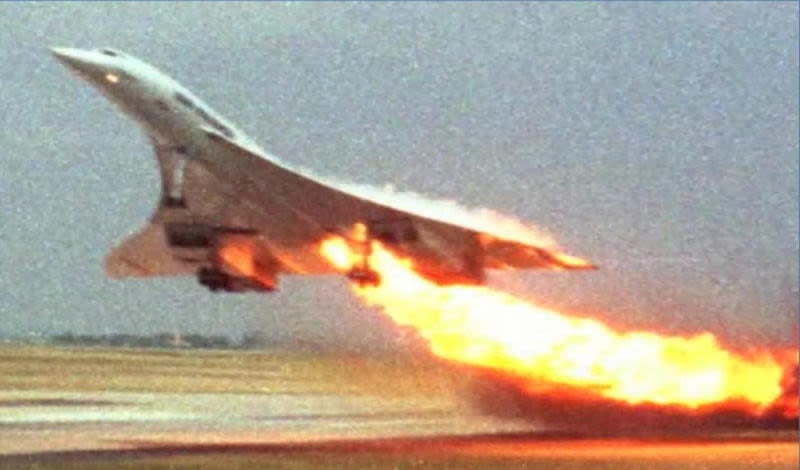
July 25, 2000 – The crash of Air France Flight 4590. Chuck Yeager, piloting the !!!error: Indecipherable SUB-paragraph formatting!!! , broke the sound barrier for the first time in 1947. And in the years that followed, supersonic flight was solely the purview of the military. However, it didn’t take long for commercial aircraft designers to being imagining what a supersonic airliner might look like. In the 1950s, both England and France began development of their own SST, and the two countries eventually signed a treaty in 1962 to begin working togethe. The agreement culminated in the !!!error: Indecipherable SUB-paragraph formatting!!! , a name that symbolized the cooperative development program. Ultimately, 20 Concordes were built, six of which were prototypes and used for development and testing. The remaining 14 were shared evenly between Air France and British Airways.
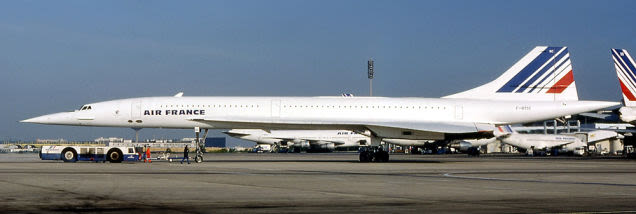
Air France Concorde F-BTSC in 1985
Following its introduction in 1976, Concorde flew regular routes from London and Paris to New York City, Washington, DC, and Barbados, and more cities followed as the airlines expanded their routes. The SST’s four !!!error: Indecipherable SUB-paragraph formatting!!! afterburning turbojets provided a maximum cruising speed of Mach 2.04, and cut the flying time between transatlantic destinations in half when compared to traditional airliners. And, for most of its operational history, Concorde had a stellar safety record. Only twice had there been incidents that could have led to a crash. In 1989, a British Airways Concorde suffered a structural failure of the vertical stabilizer, followed by a similar failure on another British Airways Concorde in 1992. On both occasions, the airliner landed safely. Only one Concorde has ever suffered a fatal crash, but that single accident ultimately helped bring an end to the era of supersonic travel.
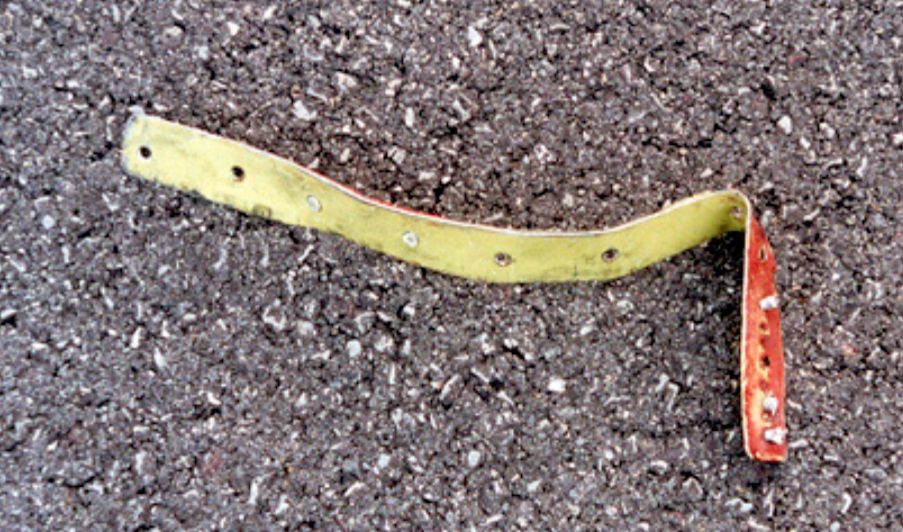
A metal strip not belonging to Concorde that was found next to the runway after AF 4590 departed. Investigators believe it was this debris that punctured the SST’s tire.
On July 25, 2000, Air France Flight 4590 (F-BTSC), a charter flight from Charles de Gaulle Airport in Paris, began its takeoff roll bound New York’s John F. Kennedy Airport. While at full power and committed to taking off, the airliner suffered a catastrophic fire and crashed into a hotel near the airport, killing all 109 passengers and crew on board plus four people on the ground. The Bureau d’Enquêtes et d’Analyses pour la Sécurité de l’Aviation Civile (BEA) carried out the official investigation and !!!error: Indecipherable SUB-paragraph formatting!!! that the crash was caused by a series of events that began when a strip of titanium alloy fell off of a Continental Airlines !!!error: Indecipherable SUB-paragraph formatting!!! which had departed ahead of Flight 4590. As the Concorde accelerated to takeoff speed, it struck the debris, puncturing the tire. As the tire disintegrated, a large chunk of rubber struck the wing and ruptured the fuel tank. This caused fuel to pour from the tank which was then ignited by the engines, leading to the loss of the two left-side engines. The cockpit crew was able to restore power to one of the failed engines, but the extra drag from the landing gear, which could not be retracted, in concert with the asymmetric thrust caused by the reduced engine power on one side, caused the pilots to lose control of the supersonic airliner, and it crashed to the Hôtelissimo Les Relais Bleus hotel near the airport.
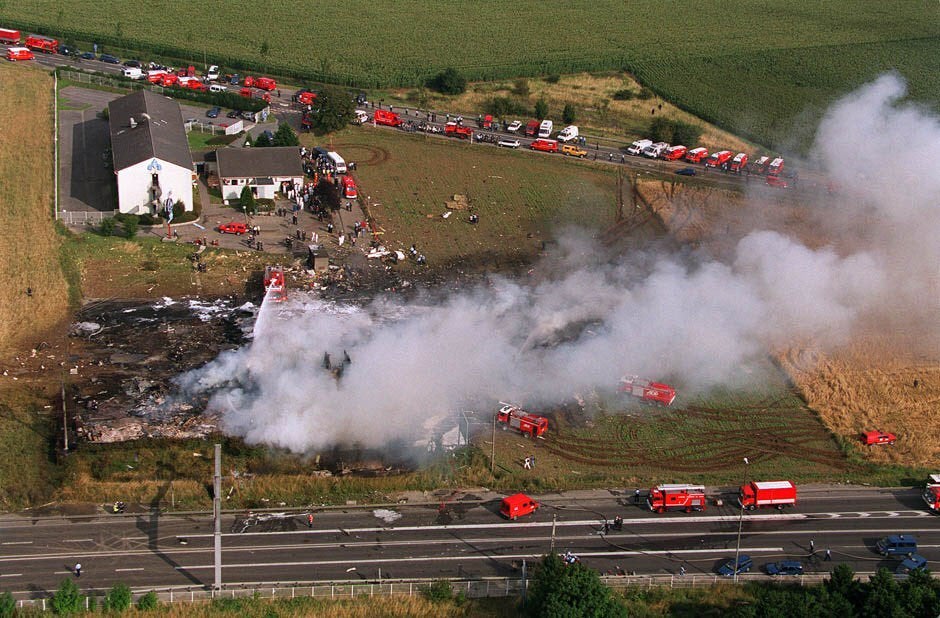
The crash site of Air France 4590. Four people on the ground were killed, along with the all 109 passengers and crew on the Concorde.
Continental Airlines, along with one of its mechanics, was initially found guilty of involuntary manslaughter for the metal debris on the runway, but that ruling was eventually overturned. During the trial, however, witnesses questioned the official BEA explanation, saying that a wheel spacer had not been installed on the left landing gear, and that the plane actually caught fire some 1,000 feet prior to passing the metal dropped by the Continental DC-10. Despite this testimony, the official explanation remained unchanged. As a result of the crash, all Concordes were grounded until safety upgrades could be made. Electronic flight controls were made more secure, the fuel tanks were lined with Kevlar to help shield them from debris, and special burst-resistant tires were fitted to the remaining airliners. Concorde flights resumed after a 14-month hiatus, but low passenger numbers and a drop in air travel following the terrorist attacks of September 11, 2001, coupled with rising maintenance costs, led to Concorde’s retirement in November 2003.
!!! UNKNOWN CONTENT TYPE !!!
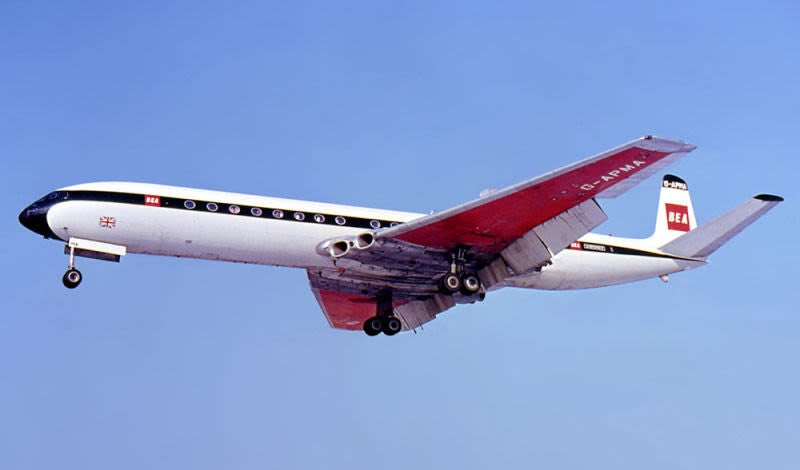
A Comet 4B on final approach to Berlin Tempelhof in 1969
July 27, 1949 – The first flight of the de Havilland Comet. Though we tend to think of the jet engine as a product of WWII, work had begun on the development of the turbojet engine as early as 1921. The first patent for an axial flow turbojet was granted to Frenchman !!!error: Indecipherable SUB-paragraph formatting!!! , though his engine was never built. Work progressed through the 1930s and 1940s, and both Britain and Germany fielded jet-powered fighters by the end of the war. The next logical step was to take the power of the jet engine and apply it to a large passenger airliner.
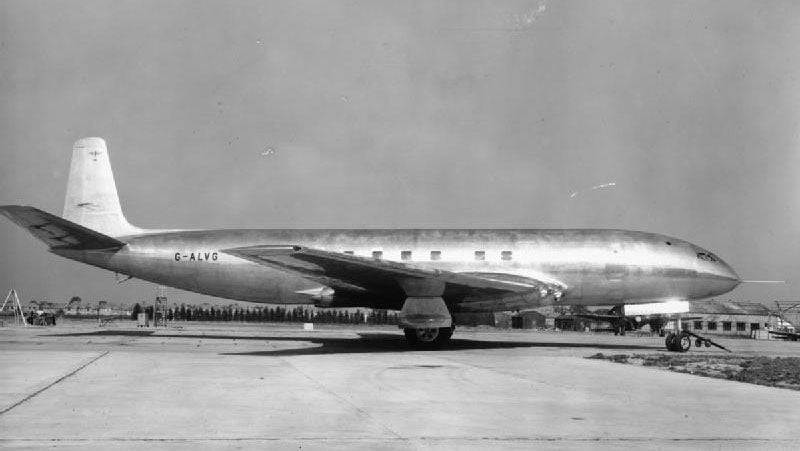
The Comet 1 prototype at Hatfield, Hertfordshire in 1949.
The British and Americans had agreed to split up the development of large, multi-engine aircraft during the war, with the Americans assuming responsibility for transport aircraft, while the British focused on production of heavy bombers. However, that arrangement left the British in the unenviable position of having very little infrastructure or expertise for the production of transport aircraft when the war ended. Many postwar British airliners were simply converted bombers. To address this shortcoming, the British formed the !!!error: Indecipherable SUB-paragraph formatting!!! in 1942 under the direction of John Moore-Brabazon, 1st Baron Brabazon of Tara, which was tasked with the development of large, pressurized aircraft that could carry mail and passengers across the Atlantic Ocean. The committee began meeting in early 1943 and, over the next two years, they decided that the civilian aviation industry would require five different types of aircraft of varying size, capacity, and range. One of the aircraft, designated the Type IV, would be a 100-seat, jet-powered, pressurized transatlantic mailplane that could carry one !!!error: Indecipherable SUB-paragraph formatting!!! of cargo at a cruising speed of 400 mph nonstop across the Atlantic.
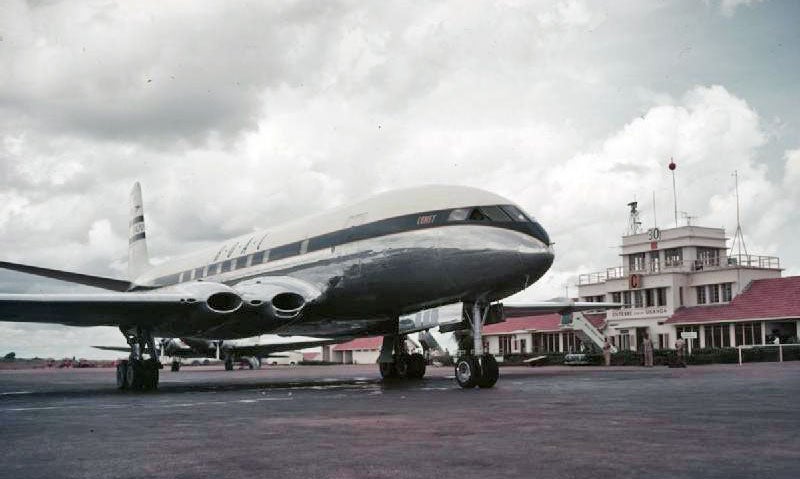
A Comet 1 of British Overseas Airways Corporation (BOAC) at Entebbe, Uganda in 1952
A proposal for such an aircraft was put forward by !!!error: Indecipherable SUB-paragraph formatting!!! , who headed his own aircraft company and had influential government ties. If successful, the new airliner would fill the need for the Type IV aircraft, as well as Type III, a short-range airliner capable of serving multi-hop routes around the British Empire. A contract was awarded to develop the de Havilland Type 106, which later became known as the DH 106, and de Havilland undertook the design of both the airframe and the engines. While initial studies into the design of the Comet included proposals for a radical tailless design, de Havilland eventually settled on a traditional configuration with a straight wing that had a leading edge swept at 20 degrees and a straight tailplane. The prototype was powered by four !!!error: Indecipherable SUB-paragraph formatting!!! turbojet engines housed in the wing roots, but those were replaced by more powerful !!!error: Indecipherable SUB-paragraph formatting!!! axial flow jet engines in production models. The pioneering airliner also featured large, square windows for the passengers.
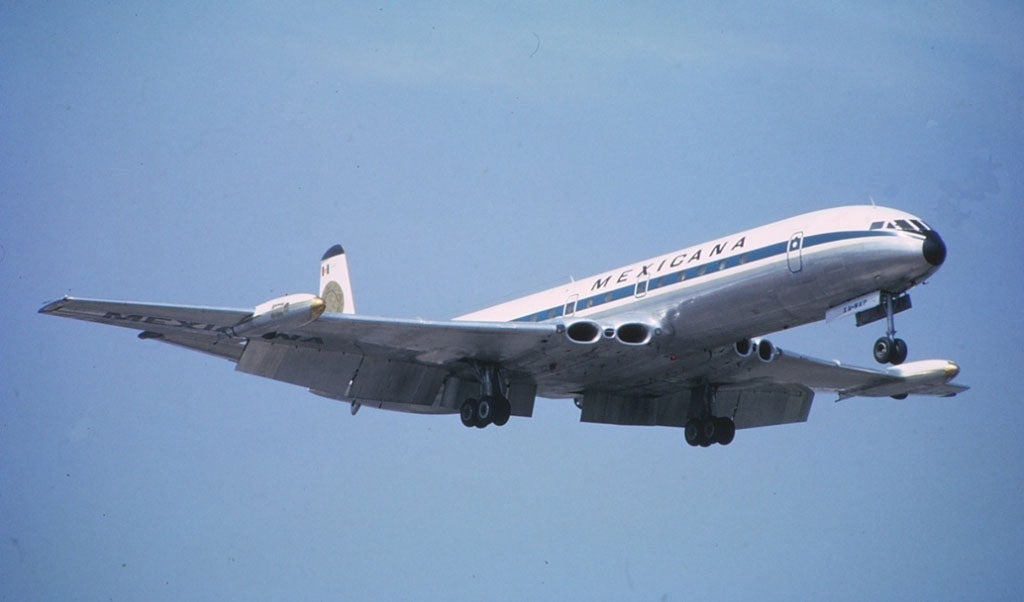
A Mexicana Airlines Comet 4 lands at Mexico City in 1966
After rigorous testing, the first Comet prototype took its maiden flight on July 27, 1949, and the airliner was introduced to the world at the Farnborough Airshow later that year. The Comet entered service with !!!error: Indecipherable SUB-paragraph formatting!!! (BOAC) on May 2, 1952 and was an immediate success, attracting high-profile passengers including the Queen Mother. However, structural weaknesses around the large windows soon led to a number of fatal in-flight explosive decompressions, and all Comets were grounded in 1954 to investigate the cause of the hull losses. The failures were traced to fatigue cracks around the large windows that arose from repeated pressurization and depressurization of the fuselage, so new rounded windows were introduced, along with a strengthened hull.
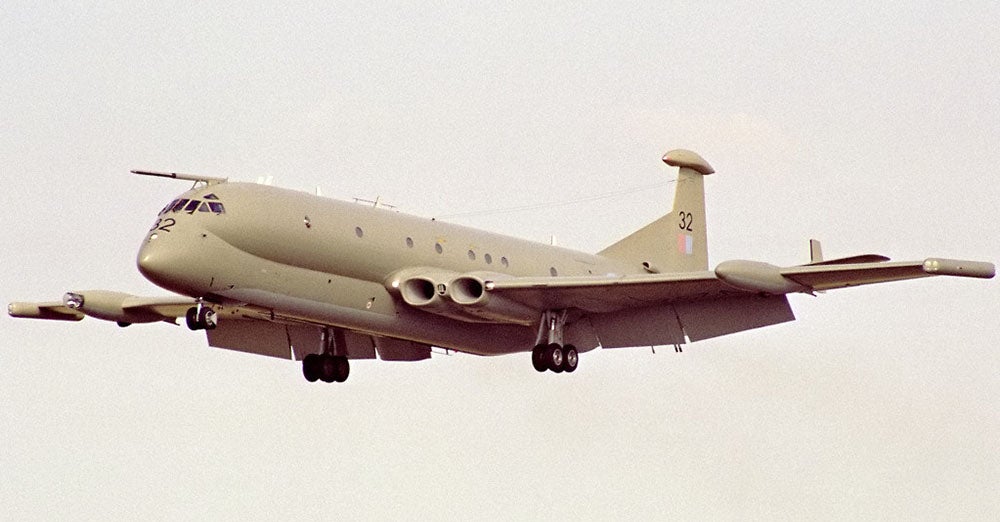
A Hawker Siddeley Nimrod, a development of the original Comet airliner
Comets returned to the skies in 1958 and, though the accidents hurt sales, the airliner went on to enjoy a long career, even after it was surpassed by more modern airliners like the !!!error: Indecipherable SUB-paragraph formatting!!! . Continued development of the Comet led to the creation of variants that stretched the airliner and added more seats and more fuel for increased range. And, when it looked like the Comet’s flying days were over, it was further developed into the !!!error: Indecipherable SUB-paragraph formatting!!! maritime patrol and surveillance aircraft. Including the prototypes, a total of 114 Comets were produced, and the last was retired in 1997.
!!! UNKNOWN CONTENT TYPE !!!
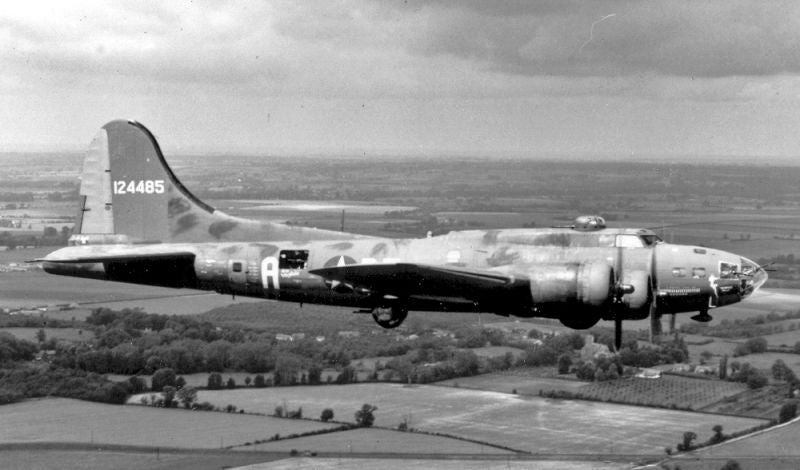 !!!CAPTION ERROR: MAY BE MULTI-LINE OR CONTAIN LINK!!!
!!!CAPTION ERROR: MAY BE MULTI-LINE OR CONTAIN LINK!!!
July 28, 1935 – The first flight of the Boeing B-17 Flying Fortress. In the lead up to the Second World War, two schools of thought emerged on how bombers could be used in battle. The first, tactical bombing, was developed to support ground forces in the achievement of a specific objective, such as overcoming a fortified position or destroying a bridge. The second, strategic bombing, would be carried out by waves of bombers flying over enemy territory in an effort to destroy factories, and later to flatten cities in hopes of destroying the morale of the civilian population. The Germans focused on the former, and honed the combined arms tactics into the Blitzkrieg warfare that was so effective early in the war. England and America, however, adopted the strategic theories of bombing, particularly those espoused by Italian !!!error: Indecipherable SUB-paragraph formatting!!! . Proponents such as !!!error: Indecipherable SUB-paragraph formatting!!! in England and !!!error: Indecipherable SUB-paragraph formatting!!! in America advocated the construction of fleets of heavy bombers based on the belief that “ !!!error: Indecipherable SUB-paragraph formatting!!! .”
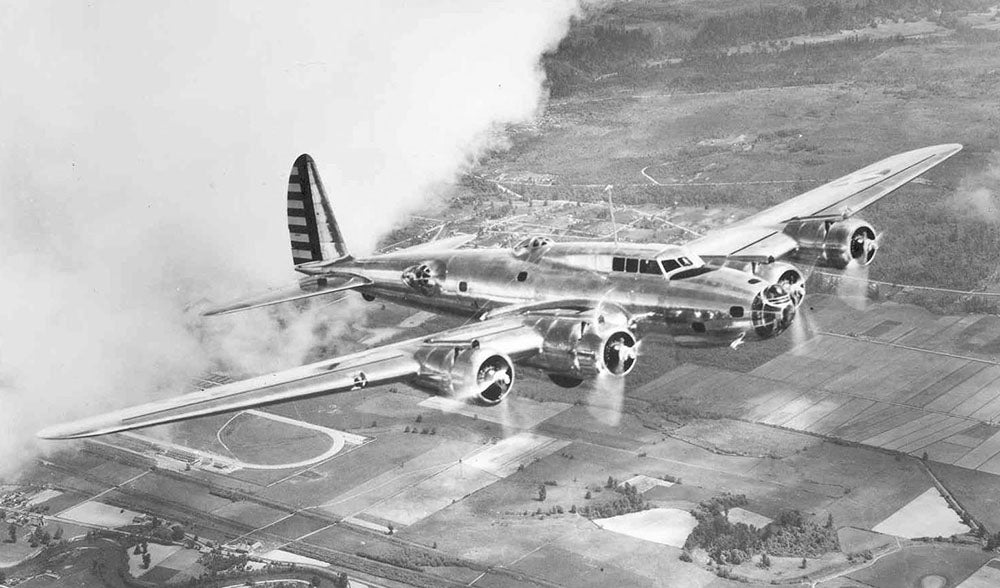
YB-17 prototype
During the 1930s, rapid advances in aircraft design and construction left behind the fabric-covered biplanes of the 1920s in favor of all-metal monoplanes of increasing size, strength, and capability. Boeing introduced the US Army Air Corps’ first all-metal bomber with the !!!error: Indecipherable SUB-paragraph formatting!!! in 1931, and Martin followed in 1934 with the !!!error: Indecipherable SUB-paragraph formatting!!! , the first truly modern bomber. But as soon as the B-10 entered service, the USAAC began the search for a new bomber to replace it, one that would be capable of carrying a “useful bomb load” at 10,000 feet, could stay aloft for 10 hours, and would have a speed of 200 mph. A competition took place at Wright Field in Ohio between the !!!error: Indecipherable SUB-paragraph formatting!!! , the !!!error: Indecipherable SUB-paragraph formatting!!! , both twin-engine aircraft, and the Boeing Model 299, which had four engines. When the new Boeing bomber, bristling with defensive armament, was first rolled out to the press, a newspaper reporter remarked that the bomber looked like a “flying fortress.” The name stuck.
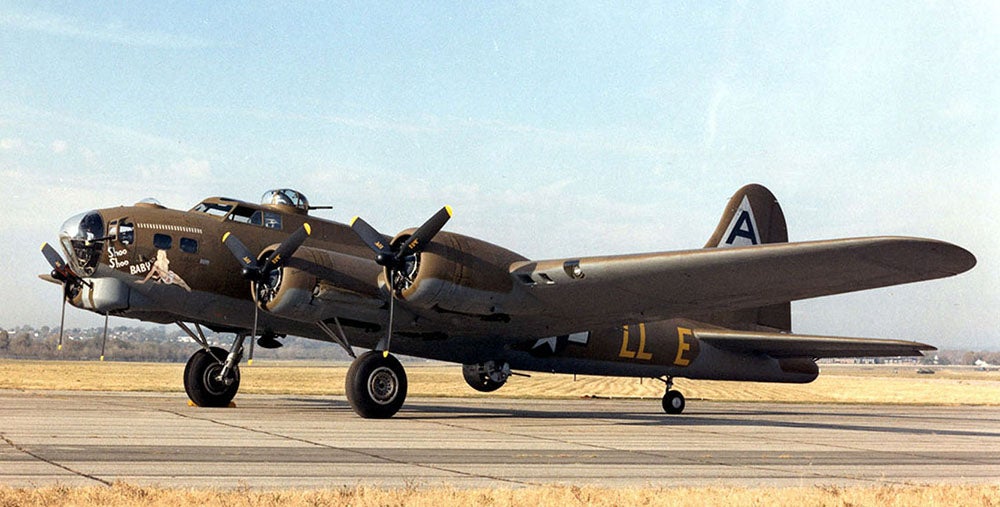 !!!CAPTION ERROR: MAY BE MULTI-LINE OR CONTAIN LINK!!!
!!!CAPTION ERROR: MAY BE MULTI-LINE OR CONTAIN LINK!!!
While USAAC brass were impressed by the performance of the Model 299, now carrying the designation YB-17, they were concerned about the higher cost of the larger bomber. When the Boeing prototype was destroyed in a crash during testing, the Air Corps chose the Martin bomber. But this was not the end of the B-17. Its performance was impressive enough for the USAAC to order 13 YB-17s for further evaluation, and its performance in testing was so good that by the outbreak of WWII in December of 1941 there were already 155 Flying Fortresses in the air. And once the Flying Fortress showed its mettle in combat, those numbers soon soared into the thousands. Following the B-17's first foray into battle in the hands of British pilots, the 8th Air Force alone racked up more than 10,000 missions over Europe. The B-17G variant, which was built in the greatest numbers (over 8,000), had no less than 13 defensive !!!error: Indecipherable SUB-paragraph formatting!!! .50 caliber machine guns and could carry up to 8,000 pounds of bombs depending on the mission. To meet the demand, wartime production of the B-17 was carried out by Boeing, Douglas, and Vega (a subsidiary of Lockheed), and a staggering total of 12,731 Flying Fortresses were produced by the end of the war.
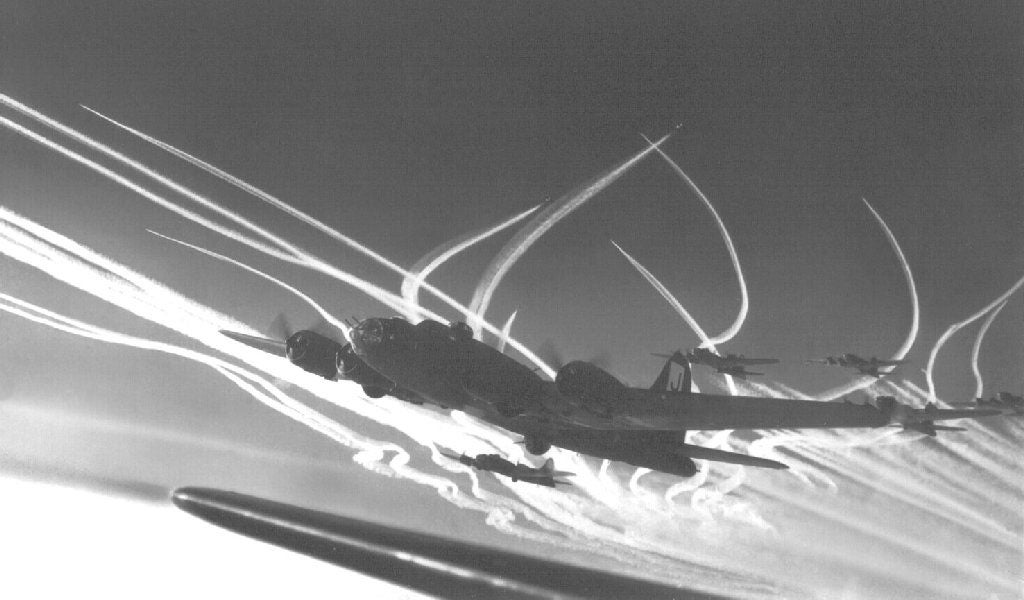
Boeing B-17F Flying Fortresses of the 390th Bomb Group, and their P-47 Thunderbolt escorts, leave vapor trails at high altitude over Europe in December 1943
In practice, the bomber didn’t always get through, but the Flying Fortress was capable of withstanding an enormous amount of damage while still bringing its crew home. The B-17 became the iconic American bomber of the war in Europe, and teamed up with the !!!error: Indecipherable SUB-paragraph formatting!!! and other smaller bombers to rain 1.4 million tons of bombs on Axis targets, with the B-17 accounting for roughly half that number. As for strategic bombing, !!!error: Indecipherable SUB-paragraph formatting!!! found mixed results. While Germany’s production of oil and ammunition was significantly affected, along with the almost total destruction of transportation capabilities and the halt of submarine production, supplies of aircraft actually increased throughout the war. Other supplies, such as ball bearings and steel, were virtually unaffected. Anywhere from 350,000 to 500,000 civilians were !!!error: Indecipherable SUB-paragraph formatting!!! , but bombing itself did not lead directly to German capitulation. Following the war, the vast majority of B-17s were broken up and sold for scrap, though a handful continued to serve in different roles. The Brazilian Air Force retired its last Flying Fortress in 1968, and today only about 14 remain airworthy, none of which are combat veterans.
!!! UNKNOWN CONTENT TYPE !!!
Short Takeoff
!!! UNKNOWN CONTENT TYPE !!!

July 25, 1984 – Cosmonaut Svetlana Savitskaya becomes the first woman to perform a spacewalk (EVA). Savitskaya began her career as a pilot and set 18 international world records flying MiG fighters and another three records in team parachute jumping before she began her training as a cosmonaut in 1980. She went to space for the first time in 1982 as a crew member of the !!!error: Indecipherable SUB-paragraph formatting!!! mission, a flight which made Savitskaya the second woman in space (after !!!error: Indecipherable SUB-paragraph formatting!!! ). On her second trip into Earth orbit, Savitskaya performed an !!!error: Indecipherable SUB-paragraph formatting!!! outside of the !!!error: Indecipherable SUB-paragraph formatting!!! space station and spent over three hours in space tethered to the station. She was twice awarded the title !!!error: Indecipherable SUB-paragraph formatting!!! , her nation’s highest honor. Savitskaya retired from the Russian Air Force in 1993 with the rank of major.
!!! UNKNOWN CONTENT TYPE !!!
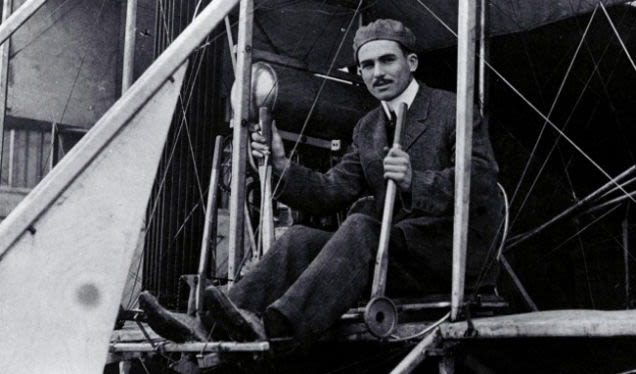
July 25, 1930 – The death of Chauncey Milton “Chance” Vought. Born on February 26, 1890 in Long Island, New York, Vought was an American aviation pioneer, engineer, aircraft designer, and co-founder of the Lewis and Vought Corporation. Vought was taught to fly by the Wright Brothers in 1911, and designed his first aircraft, the !!!error: Indecipherable SUB-paragraph formatting!!! , in 1913, which was sold to the British as a trainer. He worked briefly with the Wright Brothers on the Wright Flyer V before forming his own company and producing the !!!error: Indecipherable SUB-paragraph formatting!!! , a US military trainer and the first airplane to take off from an American aircraft carrier. Vought was just 40 years old when he died of septicemia, but the company he founded continued through numerous associations: Lewis and Vought, Chance Vought, Vought Sikorsky, Ling-Temco-Vought (LTV) Aerospace, Vought Aircraft Companies and Vought Aircraft Industries. Unfortunately, Vought himself was not around to see the tremendous growth of the company he founded, nor did he see any of the remarkable aircraft the company built, such as the !!!error: Indecipherable SUB-paragraph formatting!!! . He was inducted into the !!!error: Indecipherable SUB-paragraph formatting!!! in 1989
!!! UNKNOWN CONTENT TYPE !!!
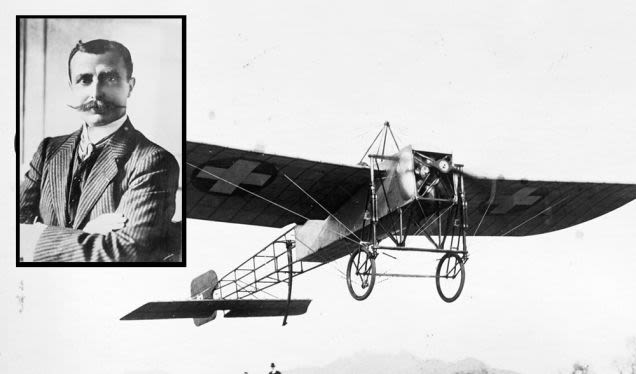
July 25, 1909 – French pilot Louis Blériot becomes the first person to fly across the English Channel. Blériot was a pioneering French aviator in the early days of powered flight, set numerous records, and formed his own airplane manufacturing company. In the early days of powered flight, the English Channel was considered one of the great obstacles to be conquered, and Blériot achieved his greatest fame when he took off from France and flew his !!!error: Indecipherable SUB-paragraph formatting!!! monoplane, powered by a 25-horsepower, 3-cylinder Anzani motor, across the Channel. After 36 minutes in the air, Blériot landed hard in England and damaged his aircraft. Fortunately, he was unhurt, and claimed a £1,000 prize for being the first to make the crossing.
!!! UNKNOWN CONTENT TYPE !!!
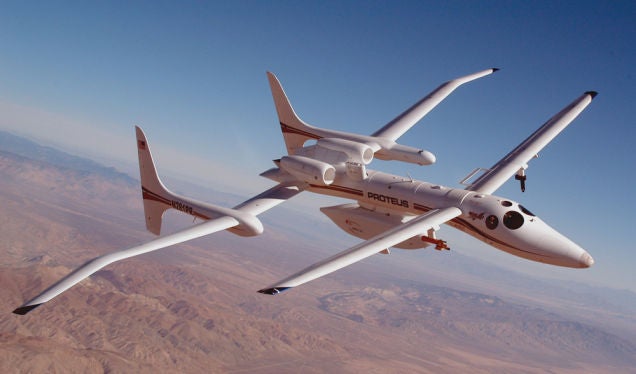
July 26, 1998 – The first flight of the Scaled Composites Proteus, a tandem-wing high-altitude research aircraft developed by aviation pioneer !!!error: Indecipherable SUB-paragraph formatting!!! to investigate the use of aircraft as telecommunications relays. The composite aircraft has a 77-foot wingspan that can be increased to 92 feet for high-altitude flight, and set a world record for altitude with a flight that reached 63,245 feet in October 2000. Due to the aerodynamic efficiency of the design, Proteus is capable of loitering over a point on the Earth at 60,000 feet for more than 18 hours. One aircraft was built, and it has carried out numerous experiments in coordination with NASA and the !!!error: Indecipherable SUB-paragraph formatting!!! (DARPA). Proteus remains in service and currently belongs to Northrop Grumman. In 2020, Proteus was !!!error: Indecipherable SUB-paragraph formatting!!! working with another innovative and stealthy Scaled Composites aircraft, the !!!error: Indecipherable SUB-paragraph formatting!!! , though the exact nature of the testing remains a mystery.
!!! UNKNOWN CONTENT TYPE !!!
!!! UNKNOWN CONTENT TYPE !!!
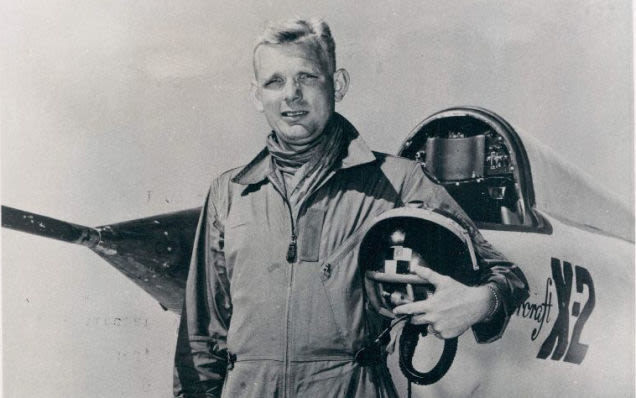
July 26, 1958 – The death of Iven Carl Kincheloe, Jr, a US Air Force test pilot, aeronautical engineer, and double ace in the Korean War. Kincheloe was born in Detroit, Michigan in 1928 and, after a military career in which he received the !!!error: Indecipherable SUB-paragraph formatting!!! , he became a test pilot for the US Air Force’s !!!error: Indecipherable SUB-paragraph formatting!!! of fighter aircraft and was awarded the !!!error: Indecipherable SUB-paragraph formatting!!! three times. While piloting a !!!error: Indecipherable SUB-paragraph formatting!!! , Kincheloe became “America’s No. 1 Spaceman” when he exceeded 100,000 feet of altitude, and was credited as the first man to enter outer space. Kincheloe was killed when he failed to eject from his crippled !!!error: Indecipherable SUB-paragraph formatting!!! during a flight over Edwards AFB in California.
!!! UNKNOWN CONTENT TYPE !!!
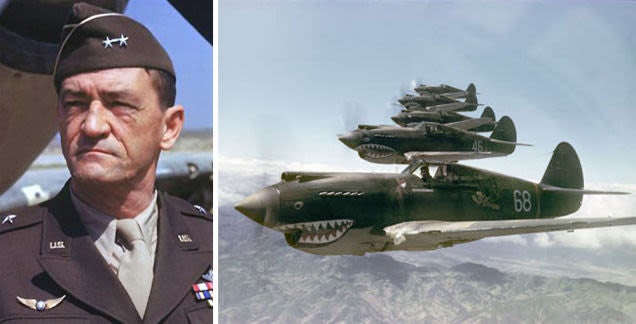
July 27, 1958 – The death of Claire Chennault. Chennault was born September 6, 1890 in Commerce, Texas and became a pilot during WWI after a stint as a school principal. A proponent of the pursuit fighter in the 1930s at a time when the US Army was focused on bombers, Chennault left the Army in 1937 and worked as an aviation advisor to the Chinese government, where he became the head of the 1st American Volunteer Group, better known as the !!!error: Indecipherable SUB-paragraph formatting!!! , in 1941. Chennault led the AVG and, later, the US Army Air Forces units that followed the disbandment of the AVG, but openly feuded with General !!!error: Indecipherable SUB-paragraph formatting!!! , the US Army commander in China. Stilwell wanted Chennault’s forces to support ground supply routes into China, while Chennault advocated bombing Japanese targets in support of Chinese Nationalist forces. Following the war, Chennault created the !!!error: Indecipherable SUB-paragraph formatting!!! , later known as !!!error: Indecipherable SUB-paragraph formatting!!! , to support the Nationalist fight against Communist China. Chennault died of lung cancer, most likely from heavy cigarette smoking, and is buried at Arlington National Cemetery in Washington, DC.
!!! UNKNOWN CONTENT TYPE !!!
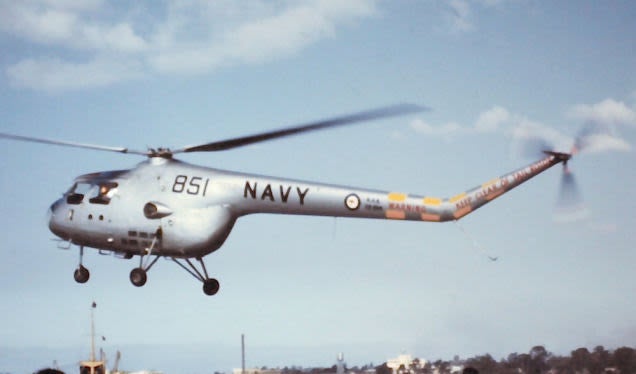
July 27, 1947 – The first flight of the Bristol Sycamore, the first domestically designed and built helicopter to serve with the Royal Air Force. Bristol began working on helicopters as early as 1944, and development of the Sycamore took over two years. The prototype was powered by a !!!error: Indecipherable SUB-paragraph formatting!!! 9-cylinder radial engine, though production models were fitted with an !!!error: Indecipherable SUB-paragraph formatting!!! radial engine which provided a top speed of 132 mph. The Sycamore entered service in April 1953 and served during the !!!error: Indecipherable SUB-paragraph formatting!!! , and was also flown by Germany, Belgium, and Australia. A total of 180 were built from 1947-1955, and the type was retired by 1972.
!!! UNKNOWN CONTENT TYPE !!!
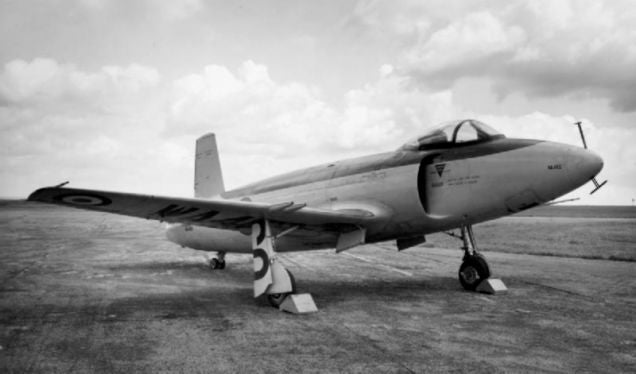
July 27, 1946 – The first flight of the Supermarine Attacker,
a fighter developed for the Royal Navy’s Fleet Air Arm (FAA) and the first jet fighter to enter operational service with the FAA. The Attacker has its roots in the
!!!error: Indecipherable SUB-paragraph formatting!!!
, a piston-powered fighter designed to replace the
!!!error: Indecipherable SUB-paragraph formatting!!!
. The Attacker used the same straight,
!!!error: Indecipherable SUB-paragraph formatting!!!
wings of the Spiteful and was powered by a single
!!!error: Indecipherable SUB-paragraph formatting!!!
turbojet which gave it a top speed of 590 mph. Since the wings, with their main landing gear, came from an existing propeller fighter, the Attacker had a tail-dragger arrangement which was unusual for a jet fighter. The Attacker entered service with the FAA in 1951, but developments in jet fighter design quickly rendered it obsolete, and the type was withdrawn from service in 1954 after the production of 182 aircraft.
!!! UNKNOWN CONTENT TYPE !!!

July 27, 1937 – The first flight of the Focke-Wulf Fw 200 Condor,
a large, four-engine aircraft originally developed by
!!!error: Indecipherable SUB-paragraph formatting!!!
as a long-range transatlantic airliner. Focke-Wulf’s chief designer
!!!error: Indecipherable SUB-paragraph formatting!!!
developed the Condor to cruise at nearly 10,000 feet, the limit for an unpressurized airliner. The Condor enjoyed a brief career as a commercial airliner serving with Deutsche Lufthansa, where it set a record for flying from Berlin to New York City in just under 25 hours. With the outbreak of WWII, Focke-Wulf added a gondola and bomb bay to convert the Condor into a long-range maritime patrol bomber. Later, the Condor was used exclusively by the Luftwaffe as a troop and VIP transport. A total of 276 were produced from 1937-1944.
!!! UNKNOWN CONTENT TYPE !!!
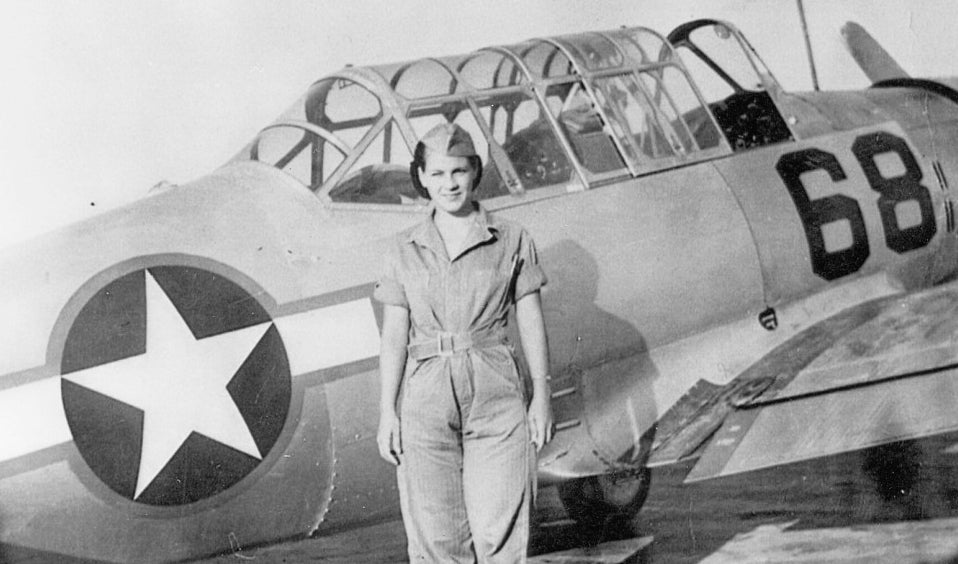
July 28, 2008 – The death of Margaret Ringenberg.
Born in Fort Wayne, Indiana on June 17, 1921, Ringenberg learned to fly in 1941 at age 19 and began her flying career in 1943 as part of the
!!!error: Indecipherable SUB-paragraph formatting!!!
(WASP), ferrying aircraft, performing test flights, and pulling targets for fighter practice. After the war, Ringenberg took up air racing, and eventually earned over 150 trophies. She also competed in the Round-the-World Air Race in 1994 at the age of 72. At the time of her death, Ringenberg had amassed more than 40,000 hours of flying time.
!!! UNKNOWN CONTENT TYPE !!!
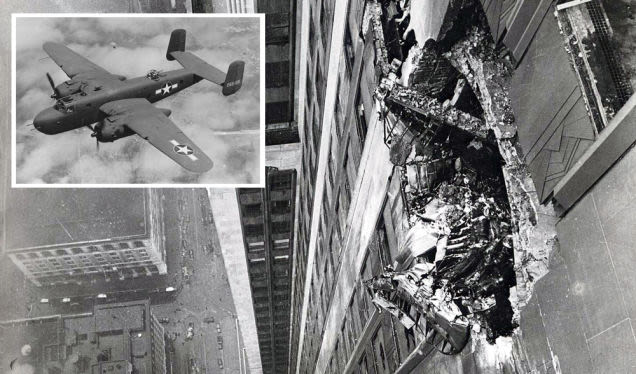
July 28, 1945 – A North American B-25 Mitchell crashes into the Empire State Building.
During a period of thick fog over New York City, a US Army Air Forces
!!!error: Indecipherable SUB-paragraph formatting!!!
was performing a routine personnel transport mission when the pilot was instructed to abort his landing and proceed to Newark Airport in New Jersey due to poor visibility. Becoming disoriented in the fog, pilot William Smith crashed into the
!!!error: Indecipherable SUB-paragraph formatting!!!
between the 78th and 80th floors, killing himself, his two passengers, and 11 civilians inside the skyscraper. Based on this accident, the architects of the
!!!error: Indecipherable SUB-paragraph formatting!!!
considered the possibility of an accidental impact by a
!!!error: Indecipherable SUB-paragraph formatting!!!
when they designed the towers, little knowing that such a scenario would play out
!!!error: Indecipherable SUB-paragraph formatting!!!
in 2001.
!!! UNKNOWN CONTENT TYPE !!!
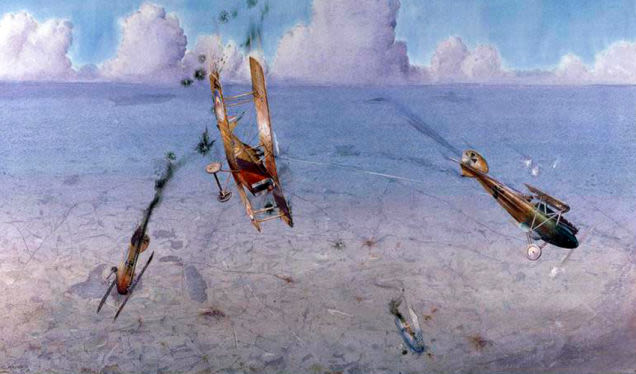
July 28, 1914 – World War I begins. World War I was a watershed event in the history of aviation, as the airplane became a weapon of war a mere 11 years after the first flight of the !!!error: Indecipherable SUB-paragraph formatting!!! . Aircraft first entered the fray as observation planes known as scouts, but pilots soon began shooting at each other with small arms. The first dedicated combat aircraft, the !!!error: Indecipherable SUB-paragraph formatting!!! , arrived in early 1915. Technological advances brought ever more powerful and faster fighters, and an interrupter mechanism developed by !!!error: Indecipherable SUB-paragraph formatting!!! allowed fighters to fire through the arc of the propeller, thereby dramatically increasing the accuracy and effectiveness of aerial marksmanship. By the end of the war on November 11, 1918, the Germans has lost more than 27,000 aircraft to enemy fire or crashes, while members of the !!!error: Indecipherable SUB-paragraph formatting!!! powers lost more than 88,000. More than 15,000 airmen were lost.
!!! UNKNOWN CONTENT TYPE !!!
Connecting Flights
!!! UNKNOWN CONTENT TYPE !!!
!!! UNKNOWN CONTENT TYPE !!!
!!! UNKNOWN CONTENT TYPE !!!
!!! UNKNOWN CONTENT TYPE !!!
!!! UNKNOWN CONTENT TYPE !!!
If you enjoy these Aviation History posts, please let me know in the comments. You can find more posts about aviation history, aviators, and aviation oddities at !!!error: Indecipherable SUB-paragraph formatting!!! .
!!! UNKNOWN CONTENT TYPE !!!
 Rusty Vandura - www.tinyurl.com/keepoppo
> ttyymmnn
Rusty Vandura - www.tinyurl.com/keepoppo
> ttyymmnn
07/28/2020 at 12:43 |
|
A big day it was.
 WasGTIthenGTOthenNOVAnowbacktoGTI
> Rusty Vandura - www.tinyurl.com/keepoppo
WasGTIthenGTOthenNOVAnowbacktoGTI
> Rusty Vandura - www.tinyurl.com/keepoppo
07/28/2020 at 12:57 |
|
No kidding, I need like an hour to get through this bad boy, and sadly, I don’t have an hour.....
 user314
> ttyymmnn
user314
> ttyymmnn
07/28/2020 at 13:23 |
|
Reading through on Tyler’s article about the 401 and Proteus was interesting:
The three aircraft flew again today, and like the day before, one of Model 401s appears to be working out of NAWS China Lake. Apparently, F-117s were also up today and flew into China Lake at around the same time. They could be part of the test, as well. An EA-18G Growler appears to also be involved in some manner. Hans mentioned it was also present on June 9th, but it wasn’t clear how involved it was. It actually ended up landing at Mojave on that day.

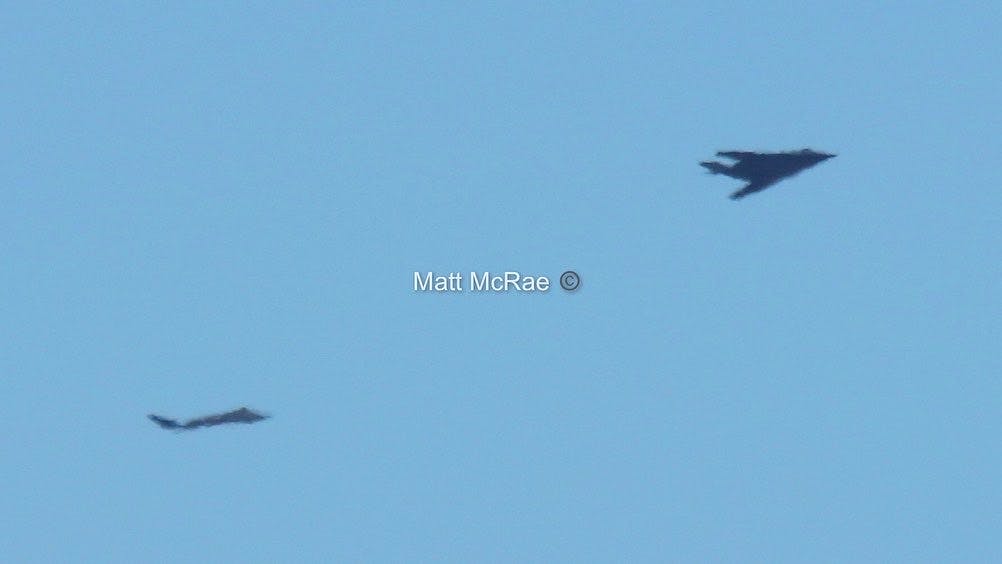
 ttyymmnn
> user314
ttyymmnn
> user314
07/28/2020 at 13:31 |
|
I’d love to know what they’re really up to.
 user314
> ttyymmnn
user314
> ttyymmnn
07/28/2020 at 13:38 |
|
I was initially thinking some sort of autonomous refueling exercise, given the formation flying and whatnot, but with the Goblin and Growler involved, that and the loyal wingman mentioned in the article are unlikely. Stealth and SEAD aircraft say “advanced radar/alternate sensors tests ” to me.
 RacinBob
> ttyymmnn
RacinBob
> ttyymmnn
07/28/2020 at 13:49 |
|
The FW 200 condor is an interesting plane. I just finished Luftwaffe War Diary and much discussion is given to the germans not having a long range strategic bomber that was capable of attacking Russian Arms factories. The FW 200 is an airliner first and didn’t have much in the way of capabilities for bombing. Especially as Hitler mandated that all planes be bombers and be capable of dive bombing. This especially hurt the Luftwaffe as it delayed development of the ME 262 as they had to redesign it to carry bombs.
There was a postwar Luftwaffe discussion in the book on if it a mistake to not have a strategic bomber. The assessment was that even if it was a mistake to not request a strategic long range bomber , the german aircraft industry was incapable in 1935 of developing the FW 200 into a bomber given all that was on it’s plate. Light bombers were all they could develop.
The war might have been different were the germans had a fleet of 600 mile range planes. But it would have been different with another 100 submarines too so what.....
On another note, I believe I read recently that though the allies could have bombed Berchtesgarten they didn’t as they thought the germans were easier to fight with Hitler alive and as their leader.....
 ranwhenparked
> RacinBob
ranwhenparked
> RacinBob
07/28/2020 at 13:59 |
|
Yes, it was a combination of the Allies believing that it might cause them to fight even harder to avenge Hitler’s death, but, also, a realization that Hitler was batshit crazy and actually a really horrible military commander, and if he was out of the way, there would be more competent officers to step in and call the shots.
 user314
> ttyymmnn
user314
> ttyymmnn
07/28/2020 at 14:03 |
|
The photos of B-17s damaged over Europe that made it home are amazing and terrifying:
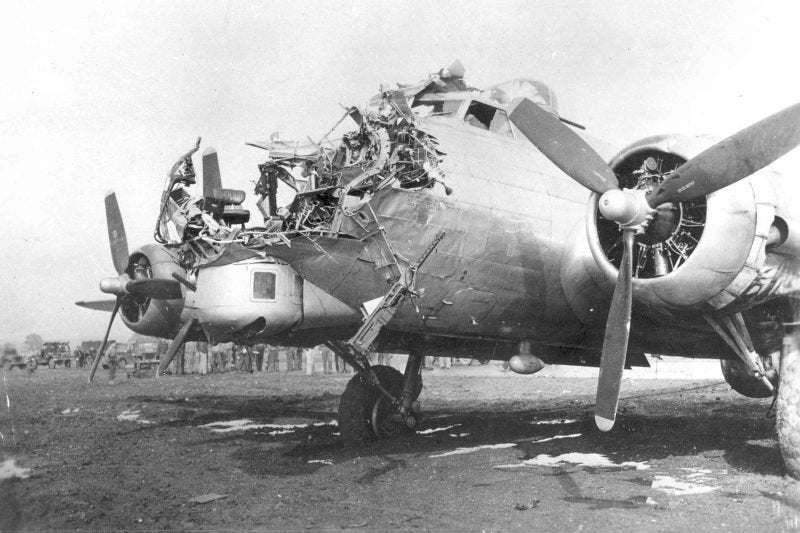
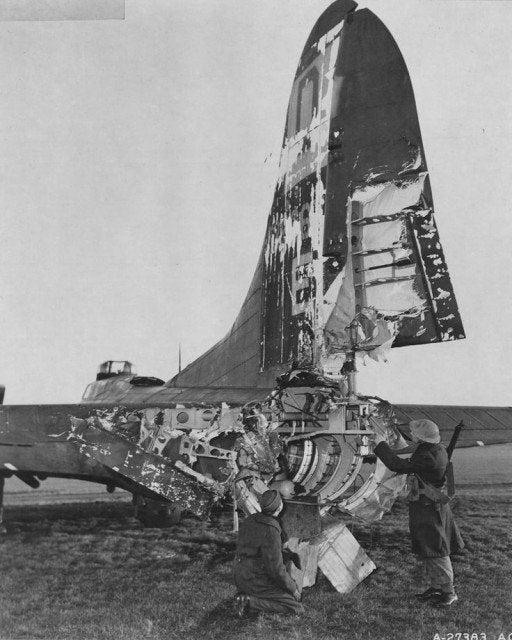
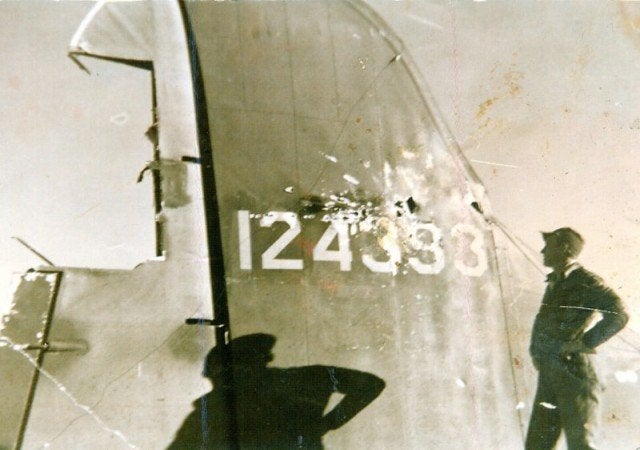
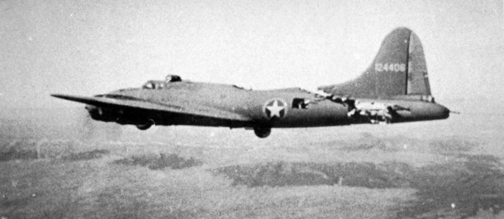
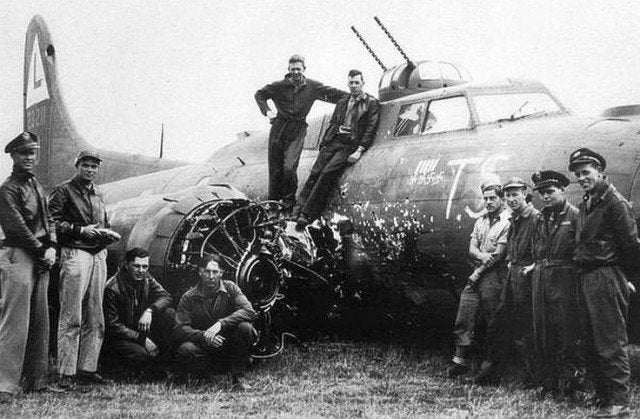
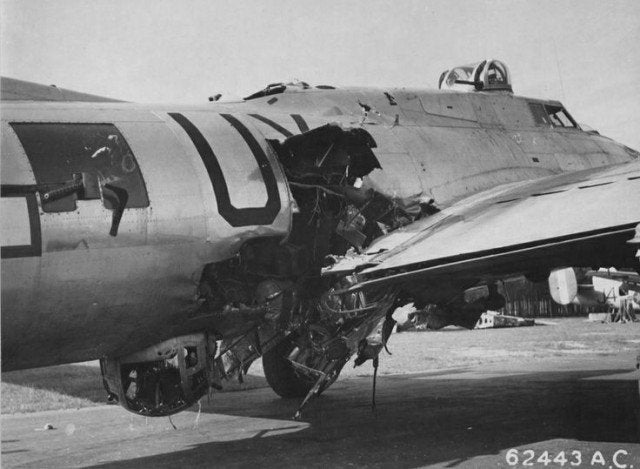
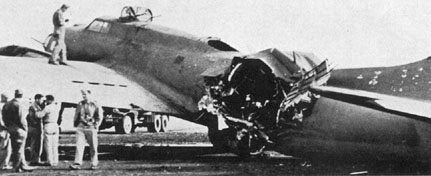
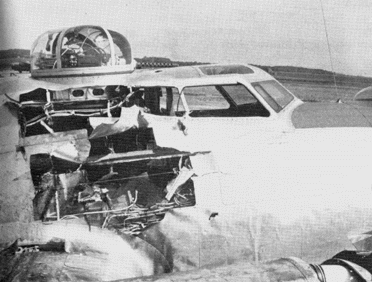
 ttyymmnn
> RacinBob
ttyymmnn
> RacinBob
07/28/2020 at 15:13 |
|
One of the main reasons that the Luftwaffe had no big bombers like the US and Britain was the untimely death of Walther Wever. Wever was the Luftwaffe Chief of Staff in the run up to the war , and a disciple of Giulio Douhet’s theories of strategic bombing, theories that were ardently supported by Billy Mitchell in the US and Hugh Trenchard in Britain. However, Wever was killed in a plane crash in 1936, and leadership of the Luftwaffe passed to Hermann Göring, a man with absolutely no vision, less capability, and who, along with Ernst Udet and Hans Jeschonnek, believed instead that the airplane should support the infantry. Thus, they put all their efforts into the light bomber and had nothing of great significance with which to attack England during the Battle of Britain. The only large bomber that Germany fielded in any numbers during the war was the He 17 7, though even that was delayed so as to have little impact on the war . Had Wever not died, the Luftwaffe likely would have looked considerably different than it did. In fact, Edward Jablonski, in his extraordinary history Airwar , goes so far as to say that the German defeat in WWII was sealed with Wever’s death.
 ttyymmnn
> user314
ttyymmnn
> user314
07/28/2020 at 15:14 |
|
That one with the tail slice always tripped me out.
 user314
> ttyymmnn
user314
> ttyymmnn
07/28/2020 at 15:43 |
|
I’m amused by the story behind 41-24393 “Eager Beaver” :
One of Murphy’s laws of combat is that “Friendly fire isn’t.” This is the tail of the B-17 Eager Beaver after a new waist gunner aboard one of her formation-mates got a little carried away. The entry in the pilot’s diary, dated Feb 18th, 1943, says, “New waist gunner shot hell out of tail today. Ship out for a week.”
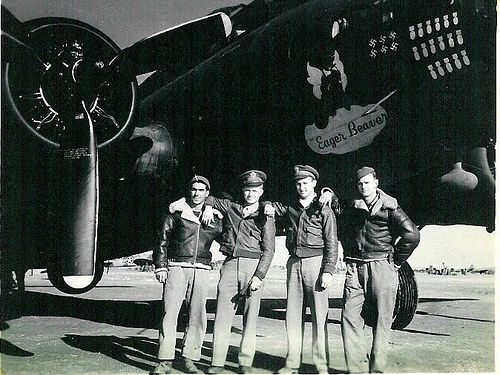
Something must have happened to her over Italy; Eager Beaver was shipped back to the US and scrapped before V-E Day.
Assigned 419BS/301BG [K] Westover 8/7/42; transferred 96BS/2BG Maison Blanche, Alg 13/11/42; Tafaraoui, Alg 22/11/42; Biskra, Alg 25/12/42; Chateau-du-Rhumel, Alg 8/2/43 14m; transferred 483BG Tortorella, It 31/3/44; Returned to the USA Olmstead 24/7/44 ; Reconstruction Finance Corporation (sold for scrap metal in USA) Bush Fd 4/6/45 .
 ttyymmnn
> user314
ttyymmnn
> user314
07/28/2020 at 16:10 |
|
I bet that happened fairly often.
 user314
> ttyymmnn
user314
> ttyymmnn
07/28/2020 at 17:20 |
|
 ttyymmnn
> user314
ttyymmnn
> user314
07/28/2020 at 17:54 |
|
My favorite scene from my favorite IJ movie. And what really pushes that scene over the top is John Williams’ score.
 RacinBob
> ttyymmnn
RacinBob
> ttyymmnn
07/28/2020 at 21:15 |
|
It is interesting to read War Diary from the german side. Reading of dispatching American.British planes is an odd feeling. Somebody from here’s husband/father/brother going down without a chute. I suppose the Germans are used to it from all of our movies.
 ttyymmnn
> RacinBob
ttyymmnn
> RacinBob
07/28/2020 at 21:19 |
|
It’s all about your point of view, I suppose.
 RacinBob
> ttyymmnn
RacinBob
> ttyymmnn
07/28/2020 at 21:25 |
|
Oh... Yes the Dornier DO 19. https://en.wikipedia.org/wiki/Dornier_Do_19
That ties things together.
Ps - nice writing.
 gmporschenut also a fan of hondas
> RacinBob
gmporschenut also a fan of hondas
> RacinBob
07/28/2020 at 22:07 |
|
Another aspect even if they were able to design a heavy bomber, they had no capacity to make it, and possibly no fuel to fly it. There was a special on the battle of Britain on how the luftwaffe was goig that they couldn’t keep trading 1 raf fighter for one bomber when that bomber had a crew of 4 and twice the number of expensive engines.
 ttyymmnn
> RacinBob
ttyymmnn
> RacinBob
07/28/2020 at 23:02 |
|
Except that I got it wrong, and skipped over Kesselring.
And thanks.
 Edgyhal94
> ttyymmnn
Edgyhal94
> ttyymmnn
07/29/2020 at 12:23 |
|
I remember that Concorde crash, I remember feeling as sad for the lives lost as the plane that had crashed too. One of Clarksons books, I know you’ve got soul, was inspired by his reaction to the crash, it’s probably one of his best ones. I think seeing something that... beautiful , for lack of a better word, go down in flames is just pretty horrific, even without taking the lives lost into account
 ttyymmnn
> Edgyhal94
ttyymmnn
> Edgyhal94
07/29/2020 at 14:27 |
|
I remember feeling as sad for the lives lost as the plane that had crashed too.
Ditto. For me, it’s the historical impact. Those planes were part of history, and we’ll never see their like again. Sure, we may get SSTs (maybe, one day), but they won’t be the same. They are more a statement of the era than just the technology.
 Edgyhal94
> ttyymmnn
Edgyhal94
> ttyymmnn
07/29/2020 at 15:13 |
|
Concorde for me was special, it was this amazing thing from my childhood that felt straight out of a Gerry Anderson production. I remember on my... 7th or 8th birthday, we went to Legoland Windsor for the day and they have a flight path over the park, which the Concorde New York flights would use, and whilst on a viewing area, looking at a big diagram of the planes that fly over the park, looked up from the diagram of Concorde to the sound of those big roaring engines and saw a Concorde basically flying at me. That’s probably my favourite plane sound bar the roar of a Spitfire. Funny thing is, I can still go and see Spitfires fly, but I’ll probably never see a Concorde fly again. A pity really.
 ttyymmnn
> Edgyhal94
ttyymmnn
> Edgyhal94
07/29/2020 at 15:56 |
|
Funny you mention Gerry Anderson. I watched the Fireflash episode just the other night. It’s extraordinary what he was able to do with models and practical effects.

 Edgyhal94
> ttyymmnn
Edgyhal94
> ttyymmnn
07/29/2020 at 16:25 |
|
Fireflash! I remember that! Nostalgia overload! Thunderbirds was something I grew up with, even though it was 30 years old when I was growing up, it still felt forward thinking. Except the cars, they all felt very 60s.
Thunderbird 2 was my favourite one. Funny how Concorde felt like it was just taken from that world of tomorrow that’ll never come.
 ttyymmnn
> Edgyhal94
ttyymmnn
> Edgyhal94
07/29/2020 at 16:32 |
|
All the episodes are available on Amazon Prime, free if are a member. Looks like you can watch UFO on IMDB TV, too.